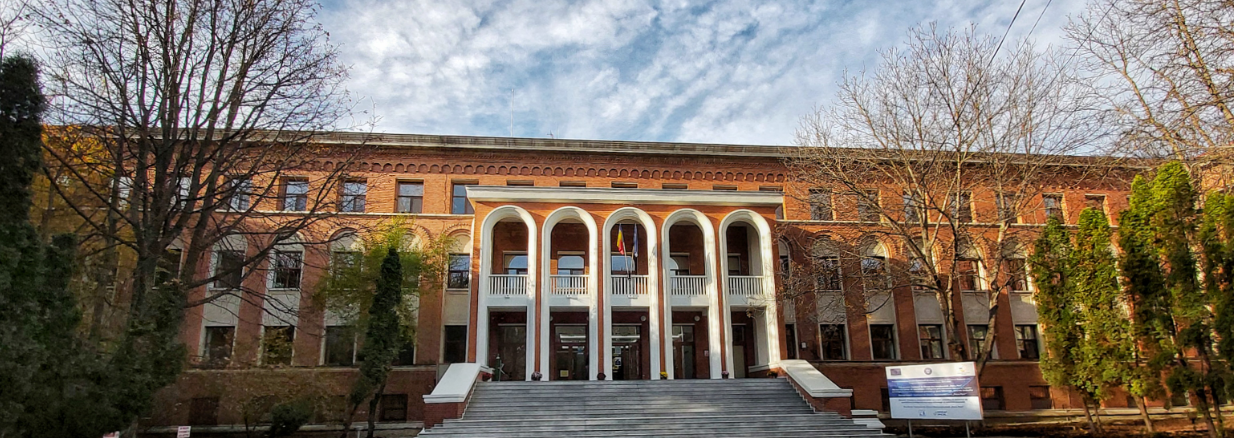Objectives - Metubin Project
The Metubin project’s general objective is to attract high-level staff from abroad, and develop a new research area in ICMPP, by implementing a project related to antiproliferative activity and tubulin polymerization inhibition of indolobenzazocine based Schiff bases, TSCs and their metal complexes, and therefore to support and increase the quality and capacity of the research, the development and innovation (RDI) activity.
In order to achieve this ambitious goal, the following specific objectives (SO) are formulated:
SO1: Development and progress of fundamental research in Romania through the establishment of a new RDI area at ICMPP conducted by an excellent research group led by a recognized specialist in medicinal chemistry from abroad.
SO2: Training of competent human resources and the formation of an interdisciplinary research group under the supervision of a highly qualified specialist, increasing the ICMPP international visibility.
SO3: Increase of the number of publications with high international impact and participation in the competitions of the European Union's Horizon Europe framework programme competitions.
Apart from these specific objectives, Metubin project intends to build up a team that will have the opportunity to develop their skills in a multidisciplinary environment with clearly defined purposes. Furthermore, a list of specific research objectives (RO) is part of the Metubin work schedule:
RO1. Preparation and characterization of the two prototype ligands bearing a trimethoxyphenyl group and copper(II) complexes thereof. Synthesis of unmodified indolobenzazocine and TSC ligands, and their coresponding complexes. Characterization of the prepared Schiff bases and Cu(II) complexes by spectroscopic methods (IR, NMR), ESI-MS, SC-XRD/PXRD or ED (for nanometer size crystals, where relevant).
RO2. Design, synthesis and characterization of the second generation of the two modified prototype ligands bearing electron withdrawing and donating groups including Me3Si and metal(II) complexes thereof. Identification of substitution pattern modification for further enhancement of binding potential of new drug candidates. Synthesis and spectroscopic characterization of the second generation of Schiff bases and Cu(II), Ni(II), Co(III), Fe(III) and Ru(III) complexes thereof. Evaluation of their antiproliferative and antitubulin activities and tyrosyl radical (Y•) reduction of R2 RNR. Analysis of the results and proposal for the synthesis of the third generation of the ligands and Cu(II), Ni(II), Co(III), Fe(III) and Ru(III) complexes.
RO3. Design, synthesis and characterization of the third generation of the two modified prototype ligands and metal complexes thereof. Identification of follow up substitution pattern modification for further enhancement of binding potential of new drug candidates. Synthesis and spectroscopic characterization of the third generation of Schiff bases and Cu(II), Ni(II), Co(III), Fe(III) and Ru(III) complexes thereof. Evaluation of their antiproliferative and antitubulin activities and Y• reduction of R2 RNR. Analysis of the results and proposal for the synthesis of the fourth generation of the ligands and metal complexes.
RO4. Design, synthesis and characterization of the fourth generation of the two modified prototype ligands and metal complexes thereof. Identification of the fourth substitution pattern modification for further enhancement of binding potential of new drug candidates. Synthesis and spectroscopic characterization of the fourth generation of Schiff bases and Cu(II), Ni(II), Co(III), Fe(III) and Ru(III) complexes thereof. Evaluation of their antiproliferative and antitubulin activities and Y• reduction of R2 RNR.
RO5. Evaluation of stability and extended biological investigation of two lead Schiff bases and two metal complexes. Evaluation of the stability of the compounds under physiological conditions by UVvis, NMR and HPLC-ESI MS. Further insight into the mechanism of tubulin inhibition and antiproliferative activity of lead drug candidates (cell cycle analysis, Western blot). In vivo investigation of the lead drug candidate. |








